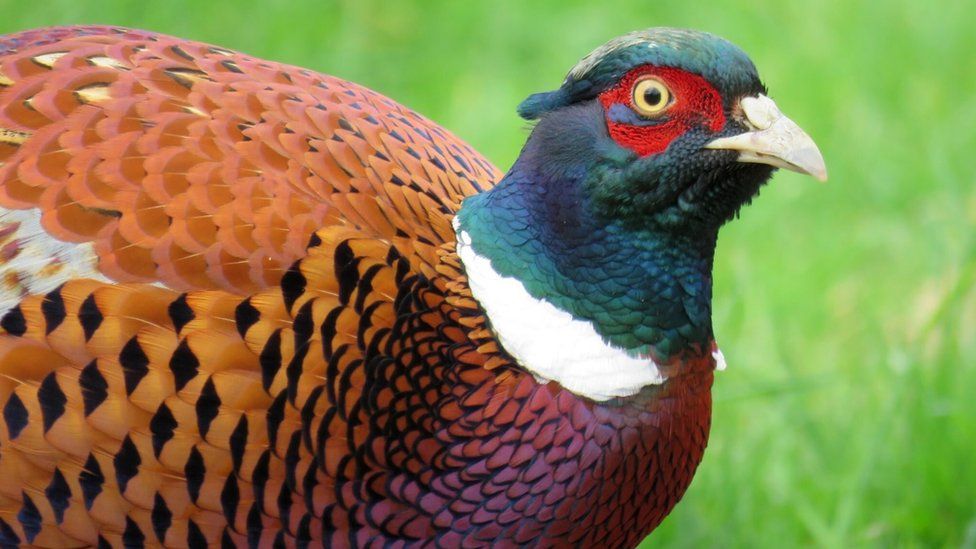Bird deaths: Pheasants 'most likely species' to die on UK roads
- Published
- comments

Pheasants are the bird species most likely to be run over on UK roads, research suggests.
There has been a big rise in the number of pheasants being bred for shooting across the UK over the past 50 years.
The study in Royal Society Open Science journal says these captive bred pheasants are 12 times more likely than other species to end up as road kill.
University of Exeter researchers found pheasants were most likely to be killed on the roads in autumn and spring.
Changing seasons
To gain a better understanding of what's causing the scale of road kill among pheasants, researchers looked at data from the early 1960s and the modern era. Fifty years ago there were far fewer of the species in the UK and most were wild bred.
Now, experts estimate that about 35 million pheasants are captive bred by the shooting industry across the UK every year.
Between 2013 and 2016 38.1% of reported road kill birds were pheasants.
Fifty years ago the worst time for road collisions with pheasants was in the breeding season in early summer. That has changed significantly, say the authors, and is the result in some measure of captive breeding.
"We see this spike in road kill in October. That's the time when the captive bred birds start to disperse from their release pens," said Dr Joah Madden from the University of Exeter, who led the study.
"Because they have been reared in the absence of any adults they have no one to show them how to live and so they walk around and get killed, they have no prior experience."
Dr Madden says that there is also a second peak in March or April. He believes that this is because commercial shoots put out food for the birds during the season. When that ends, so does the food supply. The birds have to forage more widely and end up being hit by traffic.
While the researchers had expected to see an increase in the proportion of pheasants being killed they were surprised to find it was consistent with the rate of attrition found in the 1960s.
The experts suspect that changes in behaviour among the gamekeepers in terms of feeding and keeping birds away from the roads may be limiting the level of road kill.
Natural behaviours and other factors are also likely playing a role in the continuing slaughter, with the chances of pheasants being killed on the roads almost 12 times higher than their share of the bird population would warrant.
"It may be to do with their small brains, but it's mainly to do with the fact that they are mainly terrestrial," said Dr Madden.
"They are not the world's best fliers and I think the numbers reported killed are high because they are easily spotted in their glorious plumage."
Despite the heavy toll on their numbers, Dr Madden says pheasants would persist in the UK even if they were not being bred for shooting.
The research team used road kill data provided by the citizen science group, Project Splatter.
"Our work demonstrates how changes in animal behaviour can be revealed by road kill data reported by members of the public, and the value of citizen science," said Dr Sarah from Cardiff University who co-ordinates the project.